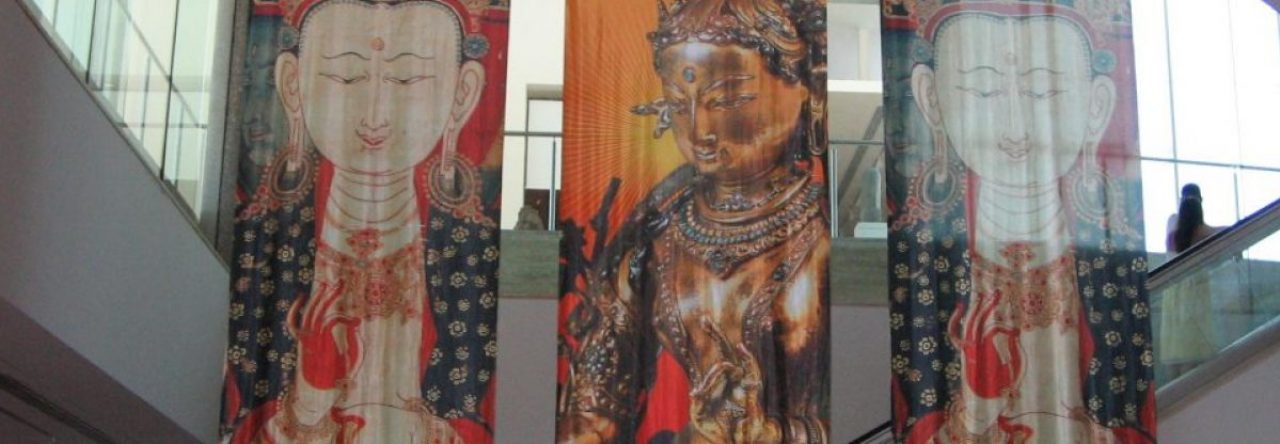The Pāli verb in this text which is used to describe the practitioner’s process – where the whole-body awareness and the breath are unified – the verb is ‘sikkhati’ which means (from the Pāli English Dictionary) that the practitioner ‘learns; trains oneself; practises.’ The practitioner is learning to do something unusual, to intimately know the present, intimately know the actual breath, and be embodied. And the practitioner is learning to discern the difference between the concept of the breath – or of the body, or even the concepts about attention itself – and the actual referent, the event that the word point to. It’s a re-training of our natural sensitivity, after years of living in our self-representations (and their corresponding ‘world-representations.’) When I say ‘re-training,’ I don’t mean like dog-training. It’s a natural unfolding, an organic process of awakening to how things are.
Month: March 2010
So, in the Kāyagatā Sutta, in response to the monks’ discussion, the Buddha expands on the practice of mindfulness of the body. And to begin with he describes a person who accustoms herself to unifying breath and whole-body awareness.
This passage is relatively straight-forward, though translators often leave the phrase, “parimukhaṃ satiṃ upaṭṭhapetvā” unclear (in this and in other suttas, such as the Satipaṭṭhāna Sutta). It’s translated usually as, ‘setting up mindfulness in front of him.’ What can this mean? The scholars don’t know. Some practitioners take it to mean that one should concentrate on the nostrils in breathing meditation. I like the Lord Chalmers translation (1926-27), where he says: the bhikkhu sits at the foot of a tree “with mindfulness as the objective he set before himself.” Of course, we sit down with the intention to be present for our experience.
Chalmers also translates the lines about knowing the length of the breath sensibly: “[the bhikkhu] knows precisely what he is doing when he is inhaling or exhaling a long breath or a short breath.” This instead of the usual “Breathing in long, he understands that he breaths in a long breath.” This last has been taken by some to be an instruction to take long and short breaths deliberately. So, to me, the Chalmers translation makes it clearer.
Notice also that, just as in the Anapanasati Sutta, after the initial simple awareness of the breath, then the attitude of ‘schooling’ the mind (Chalmers expression) comes in. The form of the Pali verbs changes to give the idea of making the effort to teach the mind a skill. The language changes from ‘He knows the breath,’ to ‘He trains thus: I shall breath [in or out] experiencing [such and such].’
I think this means that we take a less passive approach after initially contacting the breath. There is a gentle tending of the will toward (what is for it) a new kind of knowing, a non-habitual knowledge. This, by the way, is best be done without losing our intimate entry into the experience – knowing the whole body from inside the body, not from some detached distance.
So, translating freely and with an adjustment of the usual male pronouns, and translating ‘bhikkhu’ as ‘practitioner’:
The Blessed One said, “Take a practitioner who goes to the forest, or the foot of a tree, or to some empty hut, and who sits crosslegged with her body erect – setting foremost the intention to be mindful, she is ever mindful. She knows if she is breathing in, or if she is breathing out; and she knows if she is breathing a short breath or if she is breathing a long breath. She trains thus: ‘I shall breathe in and breathe out while experiencing the body as a whole. I shall breath in and out, knowing the calming of the bodily activity.’ As she dwells thus, ardent, diligent and committed, her thoughts about household life are abandoned and hence the mind becomes inwardly steadied, quieted, unified and collected. In this way a practitioner develops mindfulness of the body.”
As you sit gently being intimate with your breathing, and then as you intentionally include the whole body in consciousness with the breath, it naturally follows that after a short time there is a change in the body’s condition. It’s traditionally spoken of as the calming of the ‘bodily formations.’ It’s enough to know that this simply means that the body calms down after a period of this kind, whole-body attention.
This opens up new dimensions of bodily-based experience.
